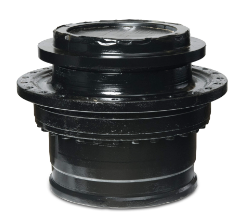Innovative Solutions for Transporting Heavy Excavators: Thinking Outside the Box
- RALPH COPE

- May 26, 2023
- 2 min read

Transporting heavy excavators can be a daunting task, requiring careful planning and execution. However, with a bit of creativity and out-of-the-box thinking, it's possible to overcome the challenges and find innovative ways to move these colossal machines. In this blog post, we will explore some unique and creative solutions for transporting very heavy excavators, revolutionizing the way we approach this task.
Modular Transport Systems: One innovative approach is the use of modular transport systems. These systems consist of specialized trailers with hydraulic mechanisms, allowing for adjustable bed lengths and widths. By utilizing these systems, heavy excavators can be disassembled into smaller components and securely loaded onto the modular trailers. This method not only distributes the weight more evenly but also enables better maneuverability, especially when navigating narrow or winding roads.
Air Cushion Transport: Imagine floating an excavator on a cushion of air! Air cushion transport, also known as airskates, utilizes a network of air cushions that lift and support the heavy load. This technique reduces friction and makes it possible to move excavators smoothly over various surfaces, including rough terrains and water bodies. Air cushion transport is particularly useful in situations where traditional methods are impractical, such as moving heavy excavators to remote construction sites or offshore projects.
Self-Propelled Modular Transporters: Self-propelled modular transporters (SPMTs) are another creative solution for transporting heavy excavators. These massive hydraulic platforms feature multiple axles with individual motors, allowing for precise control and synchronization. By using SPMTs, excavators can be driven onto the platform and securely fastened, eliminating the need for external cranes. This approach offers flexibility in terms of maneuvering and allows for transportation without the assistance of additional equipment.
Barge Transport: When faced with the challenge of moving heavy excavators across bodies of water, barge transport provides an innovative solution. By securing the excavator on a barge, it can be safely transported across lakes, rivers, or even coastal areas. Barge transport offers advantages such as cost-effectiveness, reduced environmental impact compared to other methods, and the ability to reach otherwise inaccessible areas.
Rail Transport: Rail transport presents an efficient and environmentally friendly solution for long-distance transportation of heavy excavators. Specialized railcars with reinforced platforms and secure fastening systems can be used to transport these massive machines. Rail transport provides a stable and controlled environment, minimizing the risk of damage during transit. It also reduces road congestion and offers a more sustainable alternative to traditional truck transport.
Transporting heavy excavators may seem like an insurmountable task, but by thinking creatively and exploring innovative solutions, we can overcome the challenges. From modular transport systems and air cushion transport to self-propelled modular transporters, barge transport, and rail transport, there are various methods available to revolutionize the way we move heavy excavators. By embracing these creative approaches, we can enhance efficiency, safety, and sustainability in the construction industry, paving the way for a future of seamless heavy equipment transportation.
#heavyequipment#construction#excavator#heavymachinery#constructionequipment#heavyequipmentlife#caterpillar#earthmoving#mining#excavation#komatsu#equipment#heavyequipmentnation#cat#digger#excavators#demolition#heavyequipmentoperator#machinery#constructionlife#engineering#truck#concrete#bulldozer#earthmovers#constructionmachinery#civilengineering








Comments